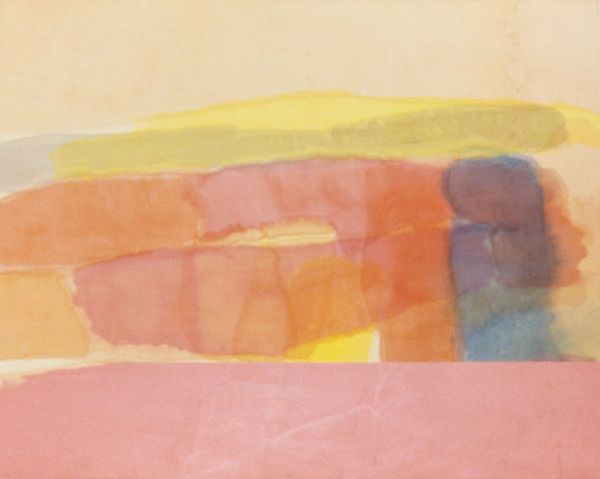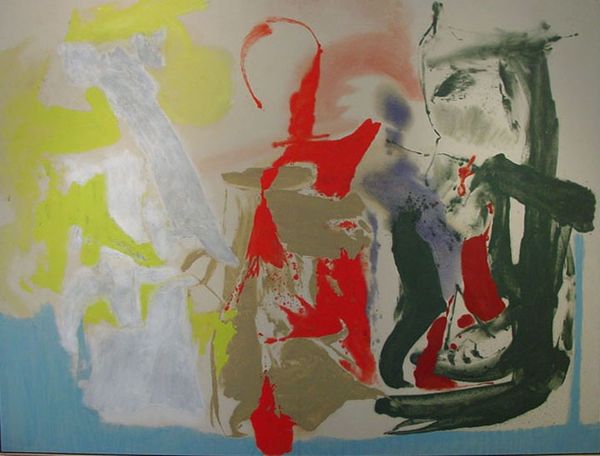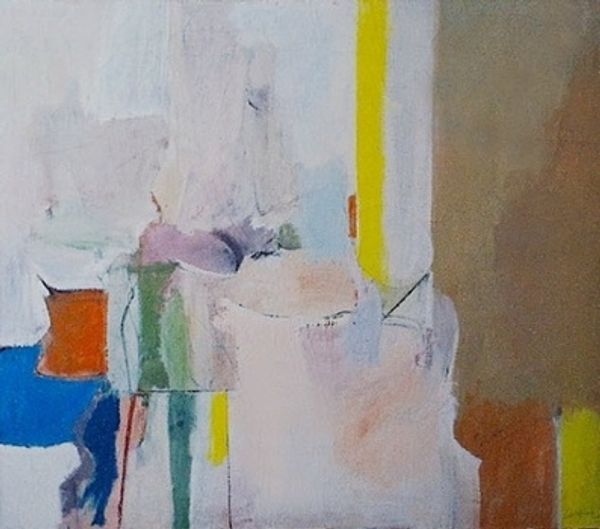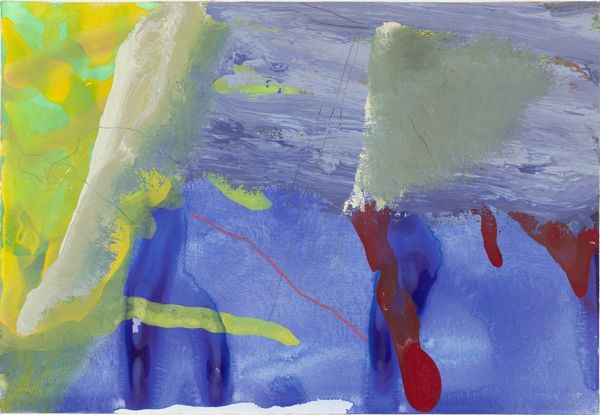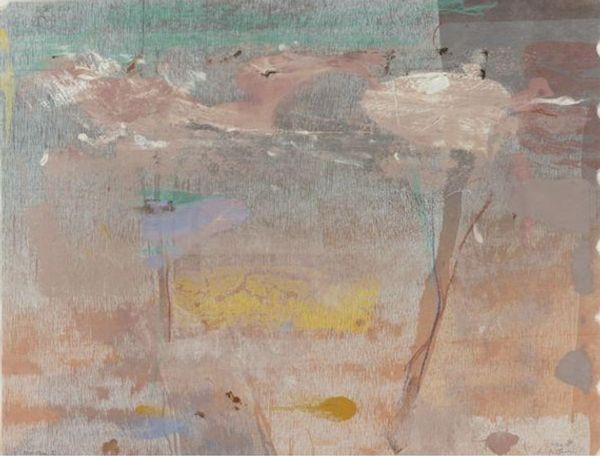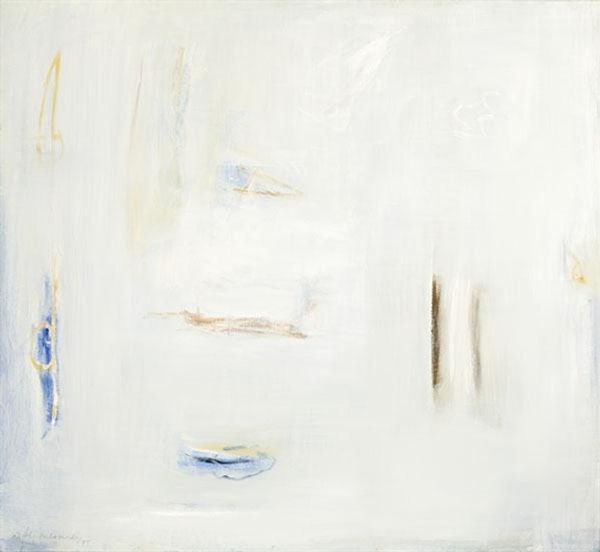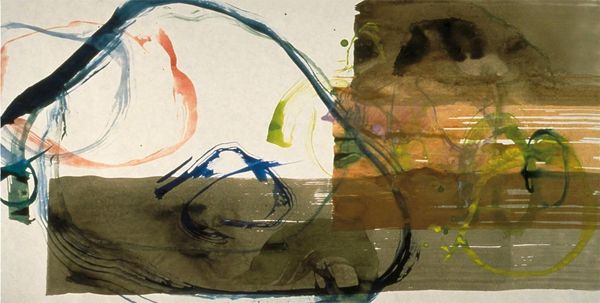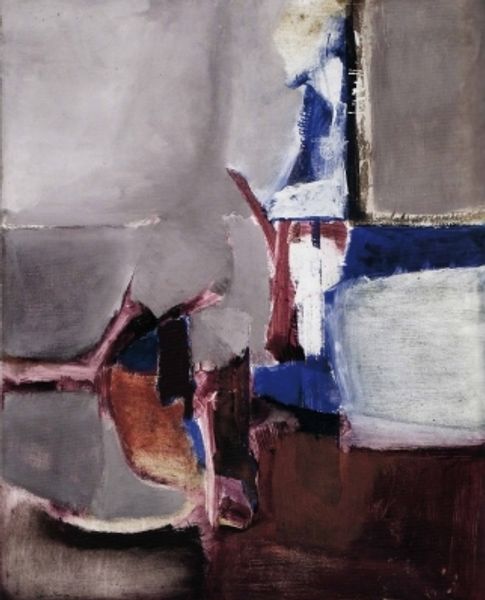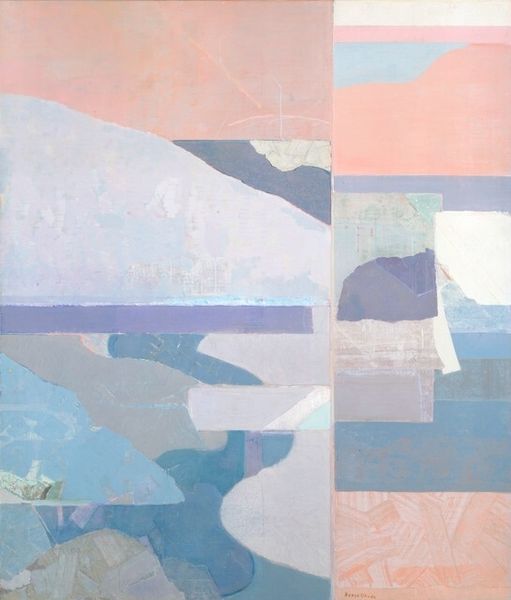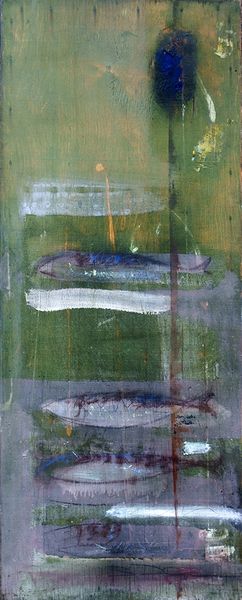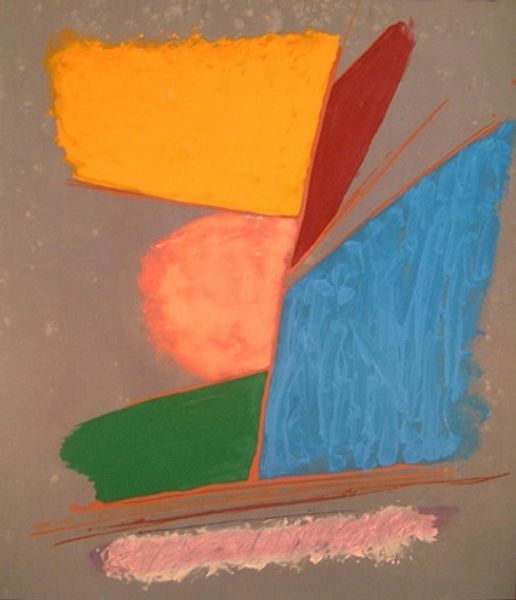
Copyright: Helen Frankenthaler,Fair Use
Editor: This is Helen Frankenthaler’s “Triptych: Madame Butterfly,” from the year 2000, made with mixed media including acrylic and stain on canvas. It has this ethereal quality, like you could just float away looking at it. What symbols or stories do you see emerging here? Curator: Frankenthaler’s abstraction feels deeply tied to memory. Think of butterflies themselves, emerging through transformation. Do you notice how the central panel bleeds, suggesting both delicacy and a fleeting presence? This echoes Puccini's opera *Madame Butterfly,* doesn’t it? A tale steeped in transience and transformation, perhaps of identity itself. Editor: Yes, now that you mention the opera, I can almost feel a sense of longing within those washes of color. The blues at the bottom right and left...are those representative of sorrow, perhaps? Curator: Consider blue, not just as sadness, but also depth, reflection. Remember that for Frankenthaler, color was form; it defines space and feeling simultaneously. Think about the cultural weight of triptychs themselves - traditionally religious forms repurposed into the secular space of abstract emotion. What might that juxtaposition mean? Editor: So the form adds a layer, suggesting a kind of modern-day veneration, even within abstraction. And the blue provides a contrast to the overall earthier colors on the canvas. Curator: Precisely! The stain technique itself is crucial. Color isn't applied *onto* the canvas, it becomes part of it, merged, indivisible. Just as cultural memory shapes our understanding, it’s embedded, inextricable. Editor: This has definitely given me a new appreciation for Frankenthaler. I would have overlooked those narrative elements without thinking about symbolic language in her color choices. Curator: Indeed! Abstraction isn't an escape from meaning; it is often its most distilled essence, calling upon layers of cultural and personal history to speak in ways representational art simply cannot.
Comments
No comments
Be the first to comment and join the conversation on the ultimate creative platform.

